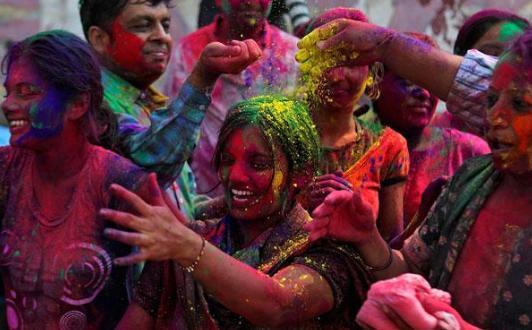India is a country full of life, culture and festivities. It is said that India is always in a constant state of festivities. However, on some special days, the whole country comes to life with religious fervor, food, and fun. Here are some of the biggest Hindu festivals in India.
If you are keen on Indian culture, you
probably already know about this festival, otherwise known as “the festival of
lights”. This five-day festival is a celebration of good over evil, light over
darkness and is why there are so many lights all through the festivities. There
are a lot of fireworks, gift giving, religious prayers and dancing. Indeed, it
is a beautiful time to visit India.
Dusshera is a one-day
festival that celebrates the victory of Lord Rama over the demon king, Ravana.
Coincidentally, the same day, Mahishasura, an evil buffalo demon, was defeated
by the warrior goddess Durga. These two spiritual victories are a symbolic
triumph of good over evil within the Hindu culture.
During the events, people burn effigies of
Ravana along with his evil son Meghnadh and brother Kumbhakarna. This is meant
to be a figurative purging of evil from people’s souls as they strive to walk
in goodness and righteousness.
During Dusshera, a lot of people commit
their new ventures and tools of trade to the goddess Durga for blessing. It is
believed that if you start a business or project on this day, you will be
successful. It is therefore also a time of new beginning.
Janamashtami (July- August)
This is the birthday of Lord Krishna, who
was the eighth incarnation of the revered Lord Vishnu. Depending on which part
of India you are, it is also referred to as Govinda or Gokulashtami. This event
is celebrated all over the country, though it is best experienced in Mumbai. Hotels in Mumbai will
be exceptionally busy in this period though, so make sure you book ahead.
A particularly interesting event is where
people form human pyramids to try and reach pots of butter which are hung from
tall buildings. This practice originates from the legend that the mischievous
young Lord Krishna used to steal butter and curd in the same manner with his
friends.
This is a particular favorite of mine. Holi
is a celebration full of color, activity and fun. If you are adventurious and
don’t mind getting wet and dirty, you will have fun. This festival, also known
as the “Festival of Colors” happens for two days during the spring. It
commemorates the defeat of the demoness Holika by Lord Vishnu.
 During this festival, people splash each
other with color powder and throw water at each other. There are also numerous
parties and festivities around the country and a lot of dancing under water
sprinklers. In addition, a local paste made from the cannabis plant, Bhang, is used during the festivities. If
this party style holiday sounds attractive, then stay
away from the South parts of India. Here, they are more keen on the spiritual
and less on the festival.
During this festival, people splash each
other with color powder and throw water at each other. There are also numerous
parties and festivities around the country and a lot of dancing under water
sprinklers. In addition, a local paste made from the cannabis plant, Bhang, is used during the festivities. If
this party style holiday sounds attractive, then stay
away from the South parts of India. Here, they are more keen on the spiritual
and less on the festival.  A word of warning: all the excitement and
intoxication during the festival may increase safety risk, especially for young
females. So, if you are touring during this period, ensure you are in a group,
preferably with men you are comfortable with. If you do that, you will be
guaranteed a fantastic time and a cultural experience like no other!
A word of warning: all the excitement and
intoxication during the festival may increase safety risk, especially for young
females. So, if you are touring during this period, ensure you are in a group,
preferably with men you are comfortable with. If you do that, you will be
guaranteed a fantastic time and a cultural experience like no other!



.jpg)



.jpg)
Comments